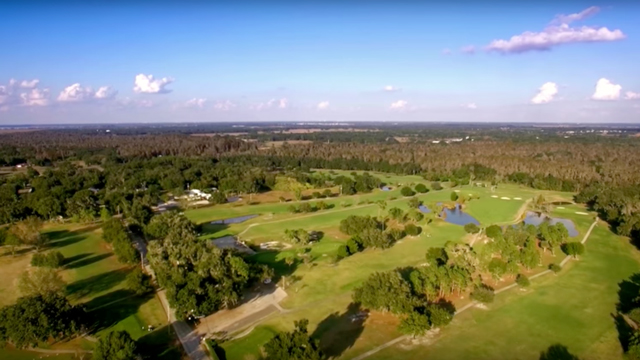NEWS
Donald Ross-designed Bartow Golf Course honored on Florida Historic Golf Trail

BARTOW -- With nine holes built on a former dairy farm on the east side of town in 1919, Bartow Golf Course ranks as the oldest Polk County course still in existence today.
Bartow Golf Course, which expanded to 18 holes in 1926, was designed by noted architect Donald Ross during what is known as the golden age of golf course architecture from the 1900s through the 1930s.
Affectionately known by locals as "The Tow," Bartow is one of five Polk courses on the Florida Historic Golf Trail along with Cleveland Heights (opened in 1925), Wedgewood (1931), Lake Wales Country Club (1924) and Highland Florida Golf Club in Lake Wales (formerly Lekarica, which opened with 12 holes in the early 1920s).
On Tuesday, Florida Secretary of State Ken Detzner designated Bartow as the featured course for the month of May on the Florida Historic Golf Trail, calling it a "fixture" for Bartow and Polk County.
MORE: Dream Rounds - Explore the historic grounds of East Lake Golf Club
"I think it's kind of like a diamond in the rough," said Lynn Zemba, general manager at Bartow Golf Course. "Not many golf courses do you have that aren't surrounded by homes. And even though we're partially in the city, there's no homes directly on the golf course. I think that's a big bonus as a golfer."
The 18-hole, par-72 layout that measures up to 6,600 yards was jam-packed from January to March. Zemba said they turned 200 rounds of golf per day.
Bartow is one of 53 public, semi-private, military or resort courses statewide on the historic trail, which the Florida Department of State created in 2014 to celebrate the state's rich heritage in golf courses built from 1897 to 1949.
"The neat part about it is it's an old traditional golf course with winding dog-legs, small, elevated greens and a lot of old oak trees," Bartow club pro Chris Banks said.
Bordered by the Peace River to the east, Bartow's pastoral setting is home to a variety of wildlife -- wild turkeys, deer, wild hogs and alligators that lay claim to ponds that dot the course.
"I see about 20 turkeys every day," Banks said. "They come out late in the day."
Bartow is a public-access, municipal course with daily green fees priced at $30. Mulligan's Bar and Restaurant is in the clubhouse.
The city-owned golf course operates on an annual budget totaling $1.03 million, with only $630,000 in revenues.
Assistant City Manager David Wright said the course, like many of the city's recreational programs, isn't designed to generate a profit.
"It provides recreation for a lot of adults that don't have any other means of getting exercise," he said. "I think that's important for the city. It's also used for fundraising by many groups in Bartow. The amount of money that course raises for the community is incredible."
Zemba said Bartow, with its origins 98 years ago, has stood the test of time in an era when many courses are being sold or going bankrupt.
Being recognized as the course of the month of May is appropriate, as Bartow hosts the 54th annual Youth Villa Classic on May 27-29 and the 47th annual Youth Villa Women's Team Tournament on May 24-25. The tournaments support the Florida Sheriff's Youth Ranch in Bartow.
And the course is in peak condition, with Zemba overseeing upgrades and improvements since she took over less than a year ago.
"It's great, fantastic," Banks said. "Aside from the drought, it's as good as I've ever seen it."
Bartow's original nine holes were built on the west side of Idlewood Avenue, with the second nine on the east side. Today, there areeight holes on the upper side west of the clubhouse on Idlewood, and 10 holes on the lower, east side of the road.
The second nine opened in December 1926 after city residents approved a $50,000 bond to buy the holdings of the original club and an additional 100 acres for the new nine holes.
Prior to that, 1924 U.S. Open champion Cyril Walker played in an exhibition at Bartow in 1925. Walker, who beat Bobby Jones in that U.S. Open at Oakland Hills near Detroit, was living in Winter Haven during the winter.
Banks said Donald Ross, best known for routing Pinehurst No. 2 in North Carolina, designed all 18 holes at Bartow.
"There's a couple of holes that changed over the years, but the overall design is his," Banks said.
This article is written by Del Milligan from The Ledger, Lakeland, Fla. and was legally licensed via the Tribune Content Agency through the NewsCred publisher network. Please direct all licensing questions to legal@newscred.com.
